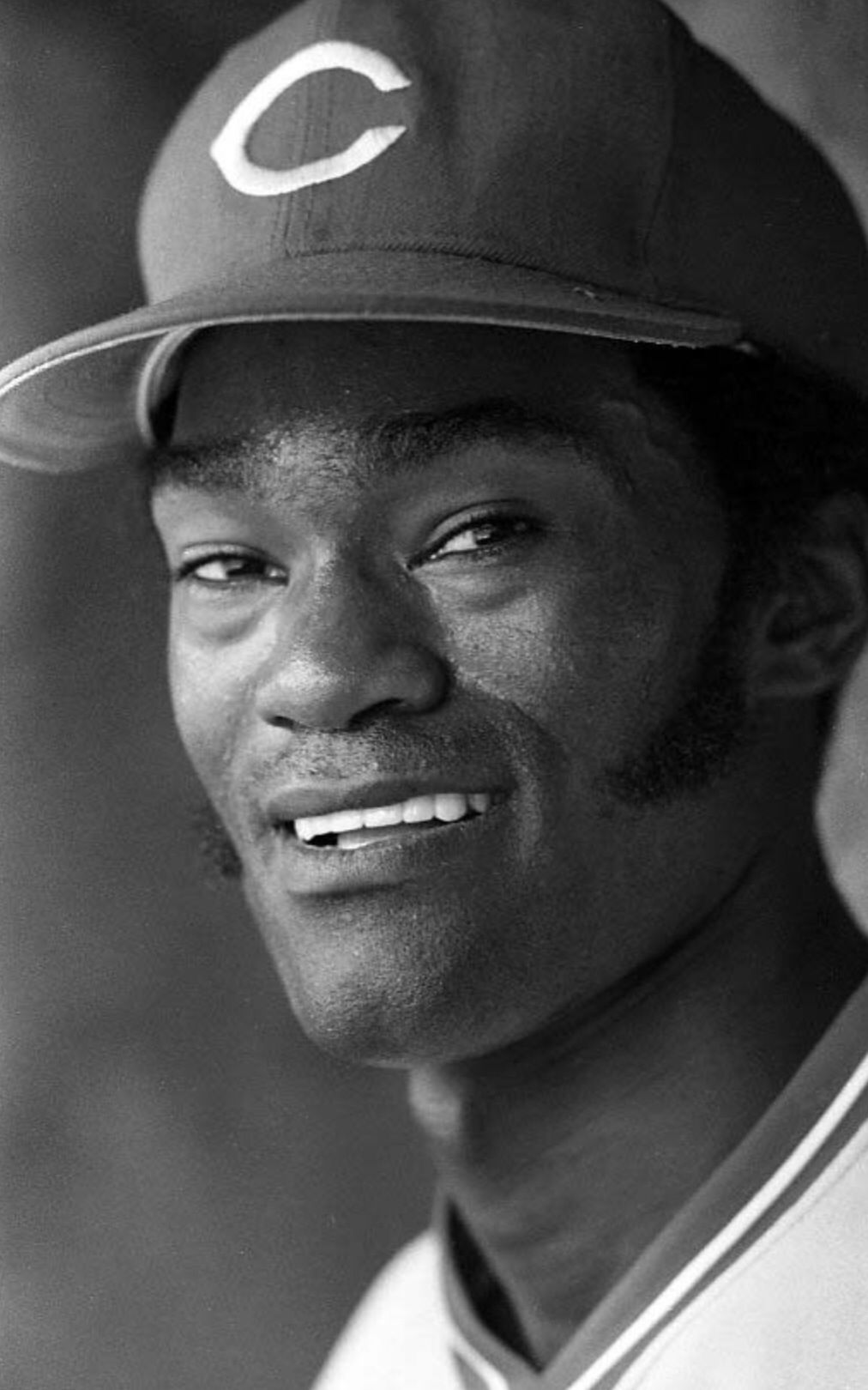In Appreciation: George Foster’s 1977 NL MVP Season
George Foster
Outfielder
Seasons with Cincinnati: 1971-1981
Experience and lessons learned in previous seasons laid groundwork for career year
Forty-one years ago, Reds outfielder George Foster had the finest season of his 18-year career, belting 52 home runs and driving in 149 runs in 158 games. He defeated the Phillies’ Greg Luzinski 291 points to 255 in voting for the National League Most Valuable Player award.
Foster also led the league in runs scored (124), total bases (388), slugging percentage (.631), and OPS (1.013). It’s the only 50+ home run season by a Reds player, and was the first 50-HR season since the Giants’ Willie Mays also hit 52 in 1965. It was the centerpiece of a three-year stretch (1976-1978) in which Foster hit 121 home runs, had 390 RBI, and made the All-Star team each year.
Such a run of success did not come easily for Foster, who was traded from the San Francisco Giants in May 1971 for shortstop Frank Duffy and pitcher Vern Geishert. He struggled with consistency at the plate in part-time duty, and it took some time for him to recover from being traded from his childhood favorite team and the chance to play alongside Mays, his idol.
A season at AAA Indianapolis in 1973 proved to be a turning point for Foster, who “had the skills but needed to develop and improve his mental attitude,” said Cindy Thomson in The Great Eight.
“What George needs to learn is to make contact,” said Reds manager Sparky Anderson. “When he does, the ball really jumps off his bat.”
With the help of teammate Ken Griffey Sr. and others, Foster matured as a player.
“I had to rediscover myself,” he said. “That was the year I got the physical, mental, and spiritual together,” said Foster. “Man is three-dimensional, and he needs all of them to bring out his full potential. I had never had all three working before.”
Still a part-time player in 1974 but better-prepared mentally for that role, Foster hit .264 with 17 home runs. He worked with hitting coach Ted Kluszewski to modify his stance and deal with the inside pitches that he had avoided before.
Things had not changed much for Foster as the 1975 season began, but as the Reds struggled near .500 in early May, Sparky Anderson had “his greatest brainstorm,” moving Pete Rose from left field to third base. The opening was created for an expected platoon of Dan Driessen and Foster, but George won the job outright with a two-month stretch where he drove in 24 runs.
For the 1975 season, Foster hit .300 with 23 home runs and 78 RBI. Now firmly established as the everyday left-fielder, he was on his way to even greater heights.
In 1976, Foster led the league with 121 RBI and made a serious run at the Triple Crown – leading the league in batting average, home runs, and RBI. He was also named Player of the Year by his peers, and finished second to teammate Joe Morgan for the NL Most Valuable Player award. Foster was disappointed that he was not voted MVP, and that the Triple Crown eluded him as well.
“I started swinging for home runs late in the season, and wasn’t getting any,” he told Ritter Collett in Men of the Machine. “So my batting average slipped. There’s a lesson there: don’t be greedy.”
The near-miss set the stage for 1977 and Foster’s spectacular year.
“I feel I belong,” he said. “And if I keep my health, my best days are ahead of me.”
What made the difference in 1977?
“I saw the ball so well,” he said. “It seemed almost any pitch would do.”
Foster also had a superb 1978 season, leading the National League with 40 home runs and 120 RBI and again making the All-Star team. Injuries cost him playing time during the following two seasons, though he drove in 191 runs during that time.
Foster’s peak seasons with the Reds were among the most productive for any Cincinnati player; in Reds history, only Ted Kluszewski and Adam Dunn have matched his back-to-back seasons with 40+ home runs.
In 1981 he won the Silver Slugger award and drove in 90 runs during the strike-shortened season, his final one in a Reds uniform. With free-agency on the horizon, he was traded to the New York Mets before the 1982 season. He played four-plus seasons for New York before he ended his career with a cameo appearance with the Chicago White Sox in 1986.
He was elected to the Reds Hall of Fame in 2003.
